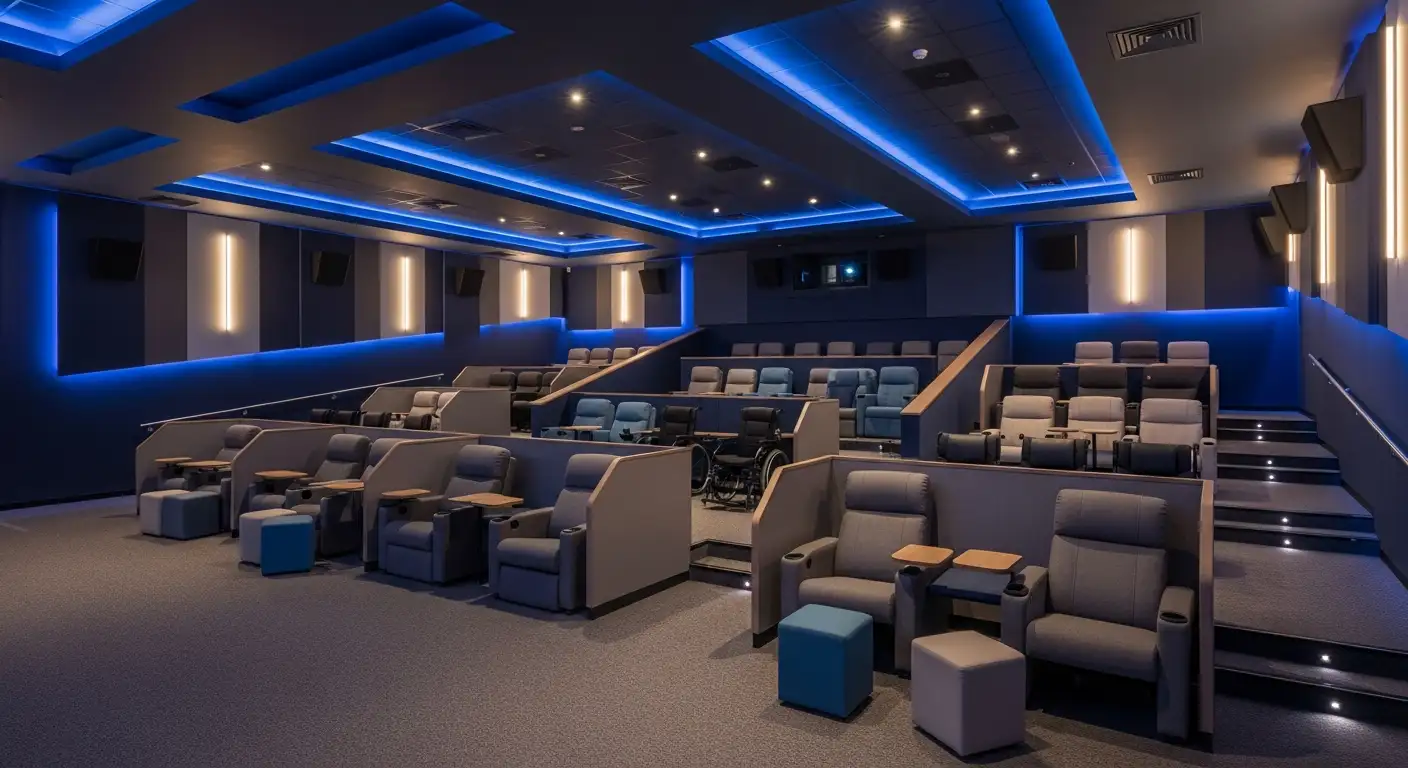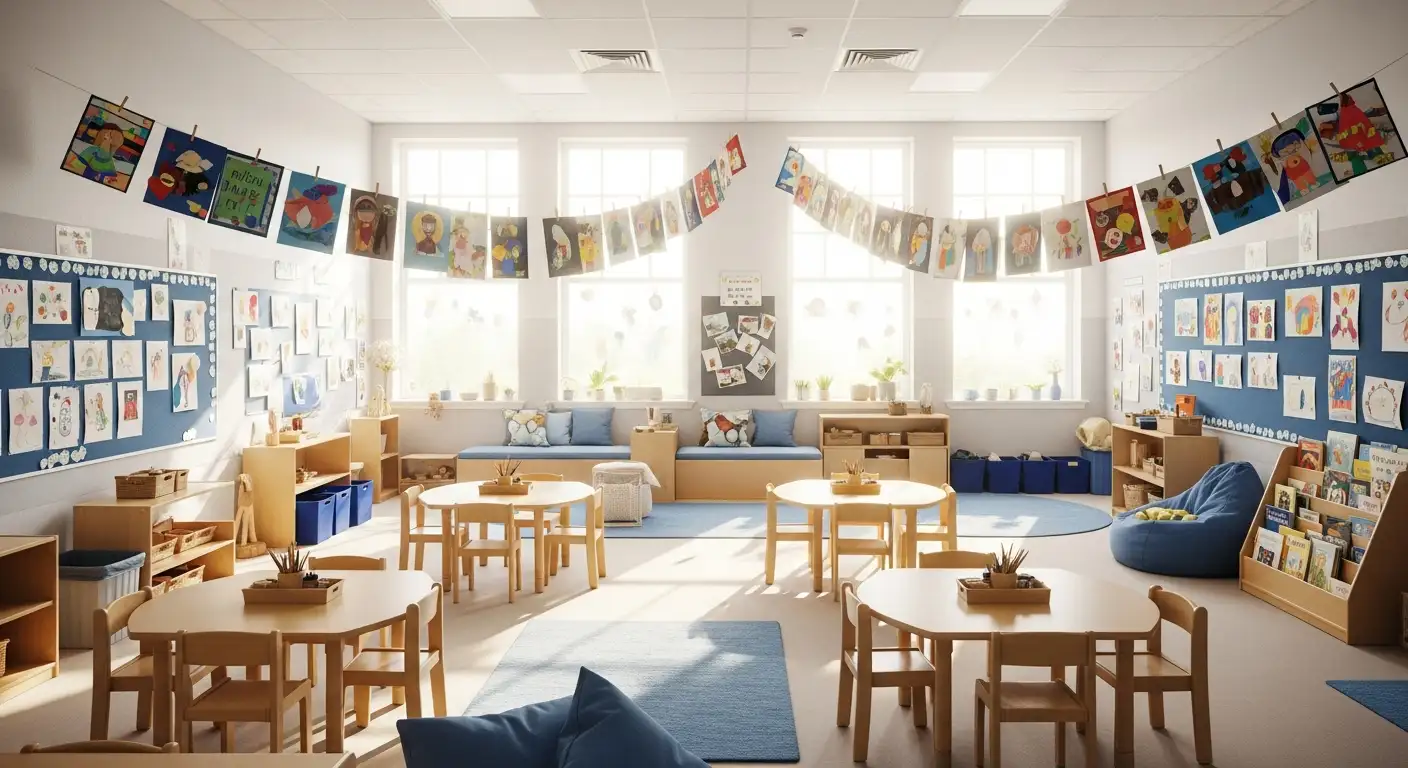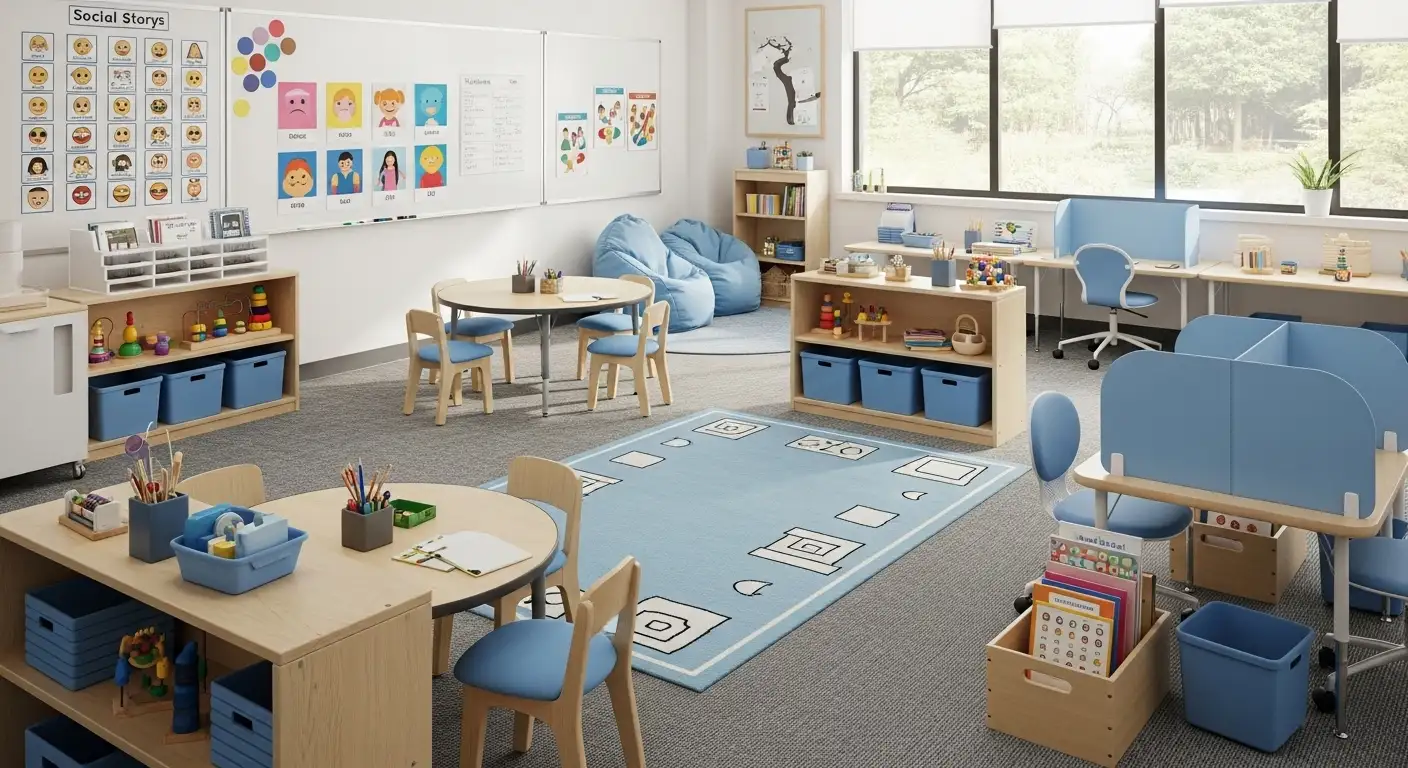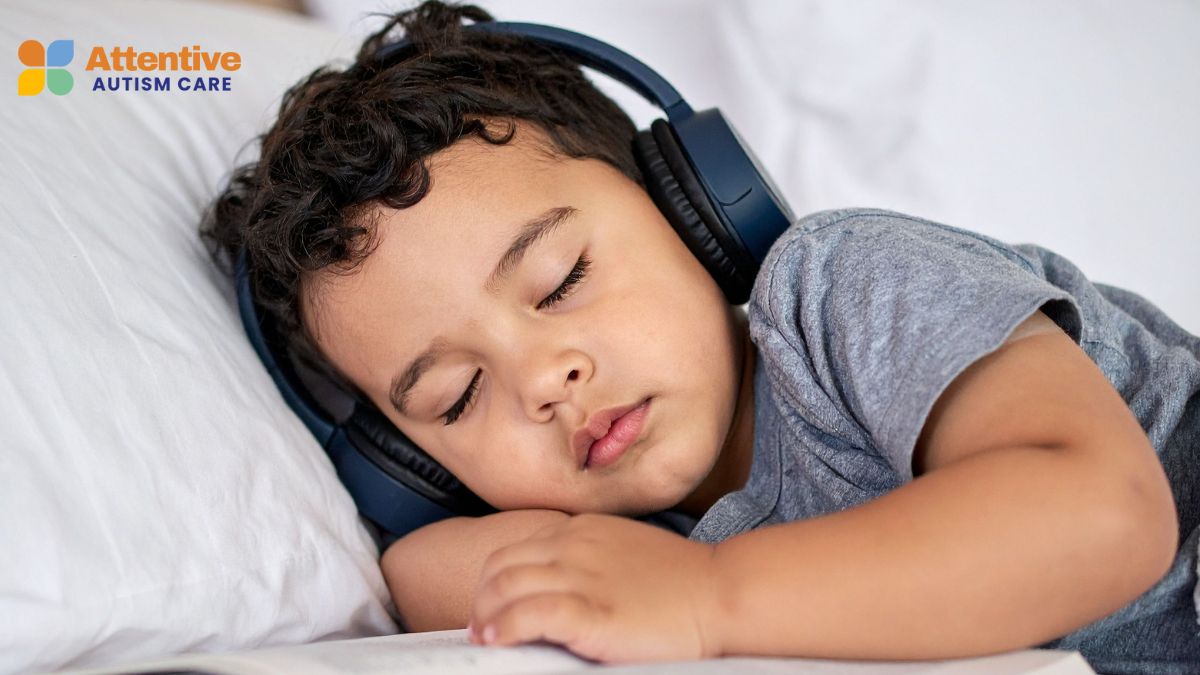Social Anxiety vs. Autism
Navigating the Overlap and Differences: Understanding Social Anxiety and Autism

Unraveling the Complexities of Social Disorders
Social Anxiety Disorder and Autism Spectrum Disorder are two conditions that often intersect in social behaviors but stem from distinct neurological and developmental roots. Recognizing their similarities and differences is essential for accurate diagnosis, effective support, and tailored treatment strategies. This article explores the symptoms, underlying causes, diagnostic criteria, and support options for both conditions, with insights into how they can be distinguished from each other.
Key Phenomena and Overlapping Symptoms of Social Anxiety and Autism

Social avoidance behaviors and difficulty with social cues
Both social anxiety disorder (SAD) and autism spectrum disorder (ASD) often manifest through social avoidance behaviors. Individuals with these conditions may shy away from social gatherings, avoid initiating conversations, or withdraw from social interactions to prevent discomfort or perceived failure.
Differences become evident in the underlying reasons. Autistic people might avoid social situations due to challenges in understanding social cues or sensory overload, rather than fear taking center stage. Conversely, those with social anxiety tend to avoid social settings primarily because they fear negative evaluation, embarrassment, or rejection.
Difficulty recognizing or responding to social cues like facial expressions, gestures, or tone of voice is common in both conditions. Autistic individuals often find it hard to interpret nonverbal behaviors, which can lead to misunderstandings and social frustration. Individuals with social anxiety, however, usually understand these cues but respond with worry or avoidance due to fear of judgment.
Nervousness and anxiety
Nervousness is prevalent in both autism and social anxiety. People with social anxiety may experience physical symptoms such as rapid heartbeat, sweating, trembling, nausea, and feelings of panic when faced with social situations.
In autism, nervousness can also be present but is often linked more to sensory sensitivities and unfamiliar environments. Autistic individuals may feel overwhelmed or distressed in social settings due to sensory overload or difficulty adapting to quick changes.
While both groups might show signs of anxiety, their emotional experiences differ. Social anxiety symptoms are driven by fear of negative appraisal, whereas autistic nervousness often stems from unpredictability or sensory stimuli.
Lack of eye contact or atypical eye contact
Both conditions can involve challenges with eye contact. Autistic individuals frequently avoid eye contact or find it aversive, not necessarily from fear but due to differences in neural processing related to social stimuli.
People with social anxiety may also avoid eye contact because they worry about being judged or embarrassed if they are scrutinized.
Understanding these behaviors requires considering their causes—neurodevelopmental differences in autism versus anxiety-driven avoidance in social anxiety. Recognizing whether poor eye contact is a result of sensory processing differences or fear is crucial for accurate assessment.
What factors can worsen social anxiety symptoms?
Factors that can intensify social anxiety include exposure to stressful life events, traumatic social experiences like bullying or rejection, and high-pressure environments with unrealistic standards.
Maladaptive coping mechanisms such as avoidance, safety behaviors (like avoiding eye contact or rehearsing conversations), and rumination can reinforce anxiety.
Biologically, heightened activity of the amygdala—a brain region involved in processing fear—can exacerbate symptoms. External influences like cultural attitudes, discrimination, or family dynamics also play roles.
Managing these factors through supportive therapies, stress management, and gradual exposure can help lessen symptoms.
What are common symptoms associated with social anxiety and autism?
People with social anxiety often experience intense fear of social situations, worry about being judged, physical symptoms like sweating, trembling, or nausea, and behaviors like avoidance.
Individuals with autism typically show challenges in social communication, such as difficulty recognizing facial expressions and body language, delays in spoken language, and repetitive behaviors. Sensory sensitivities and strong interests often feature prominently.
While both share traits like social withdrawal, their origins differ—autism as a developmental impairment present from early childhood, and social anxiety mainly as a response to specific social fears.
What are the differences and similarities between social anxiety disorder and autism spectrum disorder?
Both conditions impact social interactions, with overlaps like discomfort and limited eye contact.
However, autism involves persistent neurodevelopmental traits such as sensory processing issues, repetitive behaviors, and early childhood onset. Social anxiety involves a fear of negative judgment, typically developing later, with avoidance behaviors driven by anxiety.
Neurobiologically, autism is associated with differences in brain connectivity, while social anxiety shows specific activation patterns in the amygdala during social threat processing.
In summary, autism is a lifelong condition affecting multiple developmental areas, whereas social anxiety is mainly characterized by fear and avoidance related to social situations.
What traits and behaviors are characteristic of social anxiety and autism?
Traits of social anxiety include persistent fear of negative evaluation, physical symptoms during social encounters, and avoidance of social situations.
Autistic traits include difficulties interpreting social cues, preference for routines, sensory sensitivities, and intense focus on specific interests.
Both groups may exhibit difficulty making eye contact or engaging in small talk, often due to different motivations—fear in social anxiety, neurodevelopmental differences in autism.
Sensitivity to sensory input is common in autism, which may cause distress in certain social contexts, while in social anxiety, environmental factors might trigger heightened fear.
How can you differentiate between social anxiety and autism for accurate diagnosis?
Early developmental history is crucial—autism traits are present from childhood with lifelong patterns, while social anxiety typically manifests during adolescence or adulthood.
Autistic individuals often have persistent deficits in social communication and exhibit repetitive behaviors, whereas social anxiety is characterized by pervasive fear of social evaluation.
Diagnostic assessments involve clinical interviews, standardized questionnaires, behavioral observations, and developmental history reviews.
Neuroimaging findings, such as amygdala response patterns, can also aid differentiation, although clinical expertise remains essential.
Are there online or accessible screening tools for distinguishing between social anxiety and autism?
Yes, various online screening questionnaires are available. The Autism Spectrum Quotient (AQ) and M-CHAT-R are typically used for autism screening. The Liebowitz Social Anxiety Scale (LSAS) and the Social Phobia Inventory (SPIN) assess social anxiety.
However, these tools are not diagnostic. They can provide helpful initial insights but must be followed by comprehensive clinical evaluation.
Since symptoms may overlap, professional assessment by mental health or developmental specialists is recommended for an accurate diagnosis.
What are the diagnostic criteria for social anxiety and autism?
According to DSM-5, social anxiety disorder involves a marked and persistent fear of social or performance situations, with avoidance behaviors and physical symptoms, lasting at least six months.
Autism spectrum disorder diagnosis requires persistent deficits in social communication, alongside restricted or repetitive behaviors, present from early childhood.
Both conditions require careful clinical evaluation, considering developmental history, symptom severity, and impact on daily life.
Is social anxiety often mistaken for autism, and how can they be distinguished?
Yes, because both share features like social withdrawal and difficulty with social interactions.
However, autism typically presents with early developmental signs, repetitive behaviors, and sensory sensitivities, which are not characteristic of social anxiety.
Individuals with social anxiety usually understand social norms, but their fear leads to avoidance. Proper assessment helps differentiate, ensuring tailored support.
What treatment options and support strategies are available?
Effective treatments include cognitive-behavioral therapy (CBT), which addresses maladaptive thoughts and behaviors. For autism, social skills training, occupational therapy, and educational support are beneficial.
Medication, such as SSRIs, can be helpful for social anxiety and some autism-related symptoms.
Support strategies emphasize creating predictable routines, environmental modifications, social skills practice, and peer support.
Combining therapy, medication (when necessary), and environmental adaptations can significantly improve functioning and quality of life.
Bridging the Gap: Towards Better Understanding and Support
While social anxiety and autism often present with overlapping social behaviors such as avoidance, difficulty interpreting social cues, and social fatigue, their roots differ significantly. Autism is a lifelong neurodevelopmental condition present from early childhood, rooted in structural brain differences, sensory sensitivities, and behavioral traits like repetitive actions and strong routines. Social anxiety, on the other hand, typically emerges later as a response to fear of judgment, with symptoms driven by emotional and cognitive factors involving heightened amygdala activity and negative thought patterns. Accurate diagnosis hinges on detailed developmental history, behavioral observation, and understanding of neurobiological differences. With proper assessment, support, and tailored interventions—including social skills training, therapy, and medication—individuals with either condition can improve their social functioning and quality of life. Recognizing the nuanced distinctions and overlaps can foster compassion, reduce misdiagnosis, and promote more effective, personalized care.
References
- How to Tell the Difference Between Social Anxiety and Autism
- 'Why Am I So Awkward?' Social Anxiety Disorder vs Autism
- Social Anxiety vs. Autism: Key Differences - Talkspace
- Social anxiety vs autism: how to tell the difference - Sonic Learning
- Distinguishing autism spectrum disorder and social anxiety - PubMed
- Differences Between Social Anxiety and Autism - Simply Psychology
- Autism vs. Social Anxiety: What to Know
- Social Anxiety vs Autism | Prosper Health




































































































